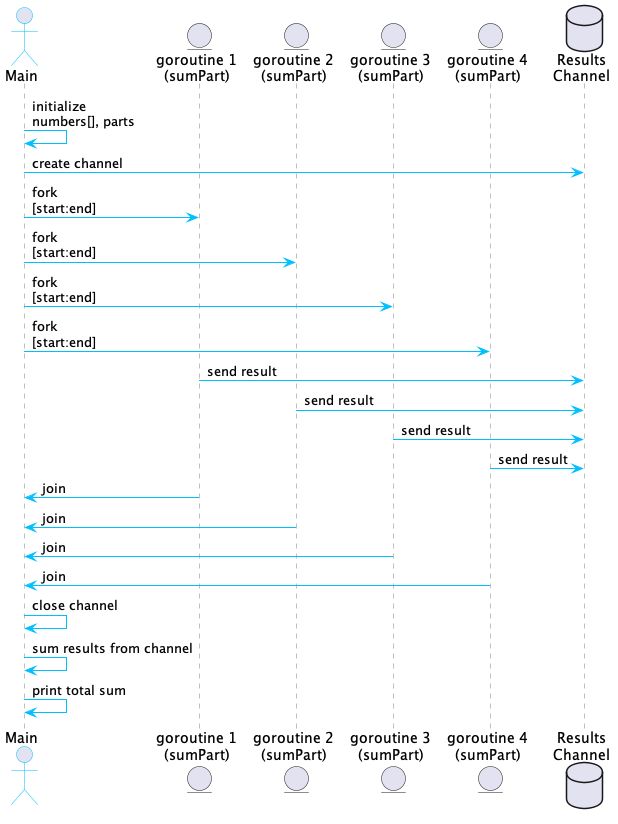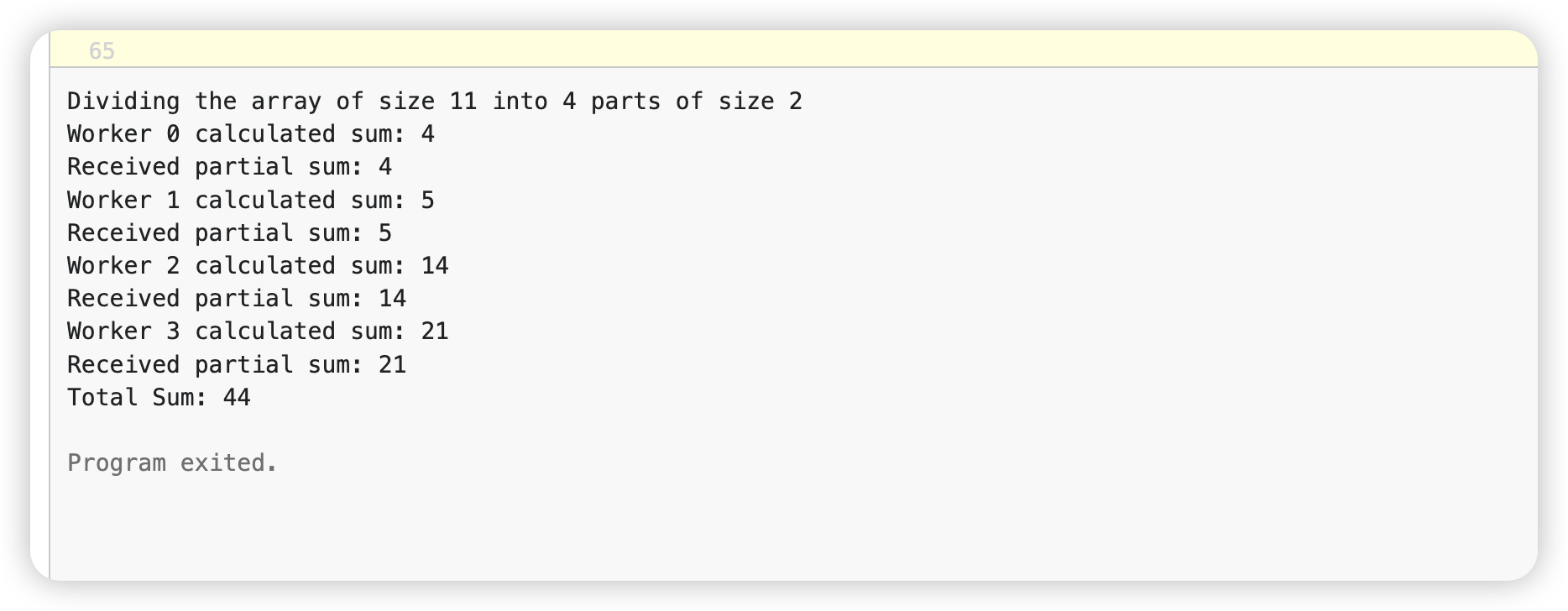
Published on
2024-06-30
|
Classified in
Go
|
number of times read:
|
|
Count:
841
|
Reading time ≈
4
Golang concurrent fork/join mode
In the field of software development, there is an increasing demand for faster and more efficient data processing. Parallel computing techniques, such as the fork/join pattern, provide a powerful solution for utilizing multiple CPU cores to execute tasks concurrently, thus significantly reducing the execution time of large-scale computations. This article explores the implementation of the fork/join pattern in Go by breaking down an example that sums an array using concurrent goroutines.
Introduction to the Fork/Join Concurrency Model
The Fork/Join pattern is a parallel technique that involves breaking a task into smaller chunks, processing those chunks in parallel (forking), and then combining the results of those tasks into a final result (joining). This pattern is particularly useful when tasks are independent of each other and can be executed concurrently without affecting each other.

Simple example: summing an array concurrently
1. Initialization: The program initializes an integer array. The program also sets the number of parts the array should be divided into, with each part being processed by a separate program.
2. Concurrency settings:
2.1 Fork: Divide the array into specified parts and start a goroutine for each part to calculate the sum of the part.
2.2 Channel Communication: Each “program” will send the calculated sum back to the main process through the channel to ensure synchronous communication.
2.3 Join: When all Goroutines complete the calculation, the main process collects and summarizes these partial results to get the total.
2.4 Logging: Logging Throughout the process, the program prints information showing the partitioning of the array, the sum calculated by each worker, and the partial sums received.
Code Sample
1 |
import ( |

in conclusion
The above example demonstrates the efficiency of the fork/join pattern when using Go for concurrent programming. By assigning the task of summing the array to multiple workers, the program runs significantly faster on multi-core processors, demonstrating the power and simplicity of using Go for concurrent programming tasks. This pattern can also be applied to a variety of other computing problems.
————-The End————-

subscribe to my blog by scanning my public wechat account




GIPHY App Key not set. Please check settings